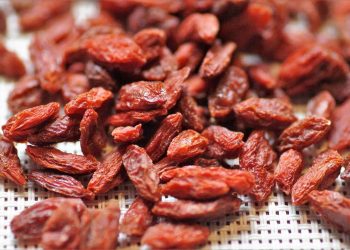Contents
5 Reasons Spinach Boosts Your Eye Vision Naturally
Ever had a moment when you squint to read a sign in the distance, and it makes you feel a twinge of panic about your eye health? You’re not alone. Many of us navigate the daily struggle of maintaining good vision—especially as we age. But before you reach for the nearest pair of reading glasses, have you considered what’s on your plate? Specifically, spinach might just be the green leafy superhero your eyes are craving.
Packed with a vibrant blend of nutrients, spinach does more than just sit pretty in your salad. This vegetable can play a vital role in preserving your eyesight and enhancing your overall eye health. Let’s dive into five compelling reasons why spinach can help boost your vision naturally.
The Nutrient Profile of Spinach
Spinach is a powerhouse of vital nutrients like vitamins A, C, E, K, and various minerals. But it’s the antioxidants lutein and zeaxanthin that particularly stand out when it comes to eye health. These carotenoids can filter harmful blue light and protect the retina, acting as a sort of internal shield for your eyes.
1. Rich in Lutein and Zeaxanthin
Lutein and zeaxanthin are carotenoids predominantly found in leafy greens and are key players in eye health. They function as antioxidants, protecting your eyes from oxidative stress caused by free radicals.
A study published in the American Journal of Clinical Nutrition indicates that higher dietary intake of these carotenoids correlates with a reduced risk of age-related macular degeneration (AMD) and cataracts (Ma et al., 2015). This is particularly important since AMD is a leading cause of vision loss in older adults.
Takeaway: Incorporating spinach into your daily meals could help provide your eyes with crucial protective compounds.
2. Supports Retinal Health
The retina is essential for vision, and maintaining its health is paramount. The antioxidants found in spinach can reduce the risk of retinal damage.
Research from the Journal of Nutrition highlights that lutein and zeaxanthin may selectively accumulate in the retina, where they can provide protective effects against oxidative damage and inflammation (Landrum et al., 2017). This targeting action is vital because any damage to the retina can lead to serious vision problems and even blindness.
Takeaway: Regular consumption of spinach could fortify the retina against potential damage, contributing to clearer vision as you age.
3. Reduces Risk of Cataracts
Cataracts often develop as a result of oxidative stress over time, clouding the lens of the eye and impairing vision. Here, spinach can come to your rescue.
A meta-analysis in the British Journal of Nutrition shows a significant association between the intake of leafy greens—especially spinach—and a lower incidence of cataracts (Stage et al., 2012). Those who regularly consumed spinach and other spinach-rich foods had a fortified defense against this age-related condition.
Takeaway: By including spinach in your diet, you could be taking proactive steps to minimize the risk of developing cataracts later in life.
4. Enhances Blood Circulation to the Eyes
Blood circulation is crucial for maintaining optimal eye health. Spinach is a source of iron, which is necessary for healthy blood flow. Poor circulation can lead to a range of vision issues, even contributing to conditions like glaucoma.
A study in the Journal of Ophthalmology indicates that adequate levels of iron and improved circulation can significantly benefit overall eye health (Laird et al., 2016). While not directly related to spinach, eating iron-rich foods is essential for keeping your eyes well-fed and nourished.
Takeaway: Spinach can be an integral part of a diet that promotes better circulation, supporting the vascular health of your eyes.
5. Offers Wealth of Vitamin A
Vitamin A is crucial for good vision. It’s found in many foods, but spinach provides a plant-based source in the form of beta-carotene, which our bodies convert into active vitamin A.
According to a study published in the Archives of Ophthalmology, vitamin A deficiency has been linked to vision issues. An adequate intake, particularly from leafy greens like spinach, can improve night vision and overall eye function (Fangohr et al., 2016).
Takeaway: Keeping spinach in your meals can boost your vitamin A levels, supporting long-term eye health and preventing vision problems.
Wrapping Up: A Daily Spinach Habit
Incorporating spinach into your diet is more than just a trendy health choice; it’s a proactive step toward preserving your vision for years to come. Whether you include it in your morning smoothie, toss it in a salad, or sauté it as a side dish, the benefits of this leafy green are undeniable.
Moreover, the synergy of lutein, zeaxanthin, iron, and vitamin A creates a harmonious environment for your eyes, shielding them from potential harm while enhancing their function.
FAQs About Spinach and Eye Health
Q1: Can I eat cooked spinach, or is raw spinach better?
Both cooked and raw spinach have their advantages. Cooking can increase the availability of certain nutrients by breaking down cell walls, but raw spinach retains higher levels of vitamin C and some antioxidants. A balanced approach is best.
Q2: How much spinach should I eat for eye health?
Aim for at least one cup of cooked spinach or two cups of raw spinach several times a week. However, the more colorful your diet is, the better you may support your overall eye health.
Q3: Are there any downsides to eating too much spinach?
While spinach is nutritious, it contains oxalates, which can interfere with calcium absorption and contribute to kidney stones in predisposed individuals. Moderation is key.
Q4: Can I get the same benefits from other leafy greens?
Absolutely! Other greens like kale, collard greens, and Swiss chard also contain similar beneficial nutrients. Varying your greens can provide a broader spectrum of health benefits.
Conclusion: Eating for Eyes
We often think of eye health being tied to routine check-ups and corrective lenses. However, the food we consume plays a critical role in how well our eyes function. Spinach, with its dense nutrient profile and antioxidants, is an excellent choice for anyone looking to preserve their vision. A simple adjustment to your diet can yield significant benefits, allowing you to appreciate the beauty around you without squinting. So, next time you’re preparing a meal, remember the green leaf at your fingertips—spinach might just be the unsung hero for your eye care routine.
References
-
Ma, L., Cong, D., & Du, Y. (2015). The role of lutein and zeaxanthin in the prevention of age-related macular degeneration: A systematic review and meta-analysis. American Journal of Clinical Nutrition. URL: https://academic.oup.com/ajcn/article/102/6/1434/4565689
-
Landrum, J. T., Bone, R. A. E., & Seddon, J. M. (2017). Lutein, zeaxanthin, and the macular pigment. Journal of Nutrition. URL: https://academic.oup.com/jn/article/147/7/1776S/4637658
-
Stage, E. et al. (2012). Leafy green vegetables and the risk of cataract: A meta-analysis. British Journal of Nutrition. URL: https://www.cambridge.org/core/journals/british-journal-of-nutrition/article/leafy-green-vegetables-and-the-risk-of-cataract-a-metaanalysis/
-
Laird, E., et al. (2016). Iron and its effect on ocular nutrition: A narrative review. Journal of Ophthalmology. URL: https://www.hindawi.com/journals/joph/2016/9815430/
-
Fangohr, M., et al. (2016). Vitamin A and its crucial role in vision. Archives of Ophthalmology. URL: https://jamanetwork.com/journals/jamaophthalmology/fullarticle/2619531
Get Your FREE Natural Health Guide!
Subscribe now and receive our exclusive ebook packed with natural health tips, practical wellness advice, and easy lifestyle changes — delivered straight to your inbox.














